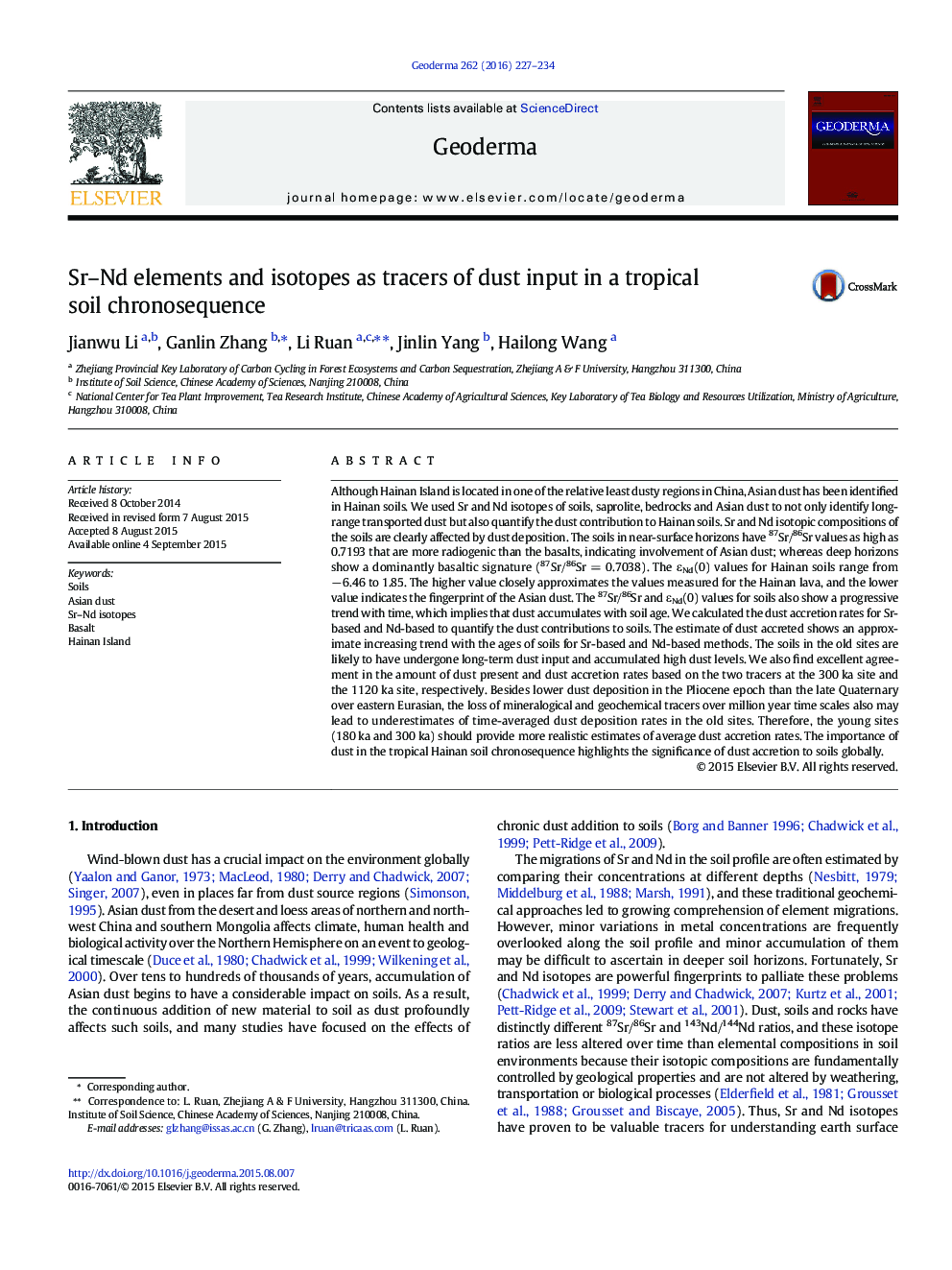| کد مقاله | کد نشریه | سال انتشار | مقاله انگلیسی | نسخه تمام متن |
|---|---|---|---|---|
| 4573066 | 1629454 | 2016 | 8 صفحه PDF | دانلود رایگان |

• Dust has been identified in Hainan soils by using Sr–Nd isotopic fingerprinting.
• The Sr–Nd isotope values for soils indicate contributions of Asian dust remarkably.
• We calculated the dust accretion rates to quantify dust contributions.
• Dust in Hainan highlights the significance of dust accretion to soils globally.
Although Hainan Island is located in one of the relative least dusty regions in China, Asian dust has been identified in Hainan soils. We used Sr and Nd isotopes of soils, saprolite, bedrocks and Asian dust to not only identify long-range transported dust but also quantify the dust contribution to Hainan soils. Sr and Nd isotopic compositions of the soils are clearly affected by dust deposition. The soils in near-surface horizons have 87Sr/86Sr values as high as 0.7193 that are more radiogenic than the basalts, indicating involvement of Asian dust; whereas deep horizons show a dominantly basaltic signature (87Sr/86Sr = 0.7038). The εNd(0) values for Hainan soils range from − 6.46 to 1.85. The higher value closely approximates the values measured for the Hainan lava, and the lower value indicates the fingerprint of the Asian dust. The 87Sr/86Sr and εNd(0) values for soils also show a progressive trend with time, which implies that dust accumulates with soil age. We calculated the dust accretion rates for Sr-based and Nd-based to quantify the dust contributions to soils. The estimate of dust accreted shows an approximate increasing trend with the ages of soils for Sr-based and Nd-based methods. The soils in the old sites are likely to have undergone long-term dust input and accumulated high dust levels. We also find excellent agreement in the amount of dust present and dust accretion rates based on the two tracers at the 300 ka site and the 1120 ka site, respectively. Besides lower dust deposition in the Pliocene epoch than the late Quaternary over eastern Eurasian, the loss of mineralogical and geochemical tracers over million year time scales also may lead to underestimates of time-averaged dust deposition rates in the old sites. Therefore, the young sites (180 ka and 300 ka) should provide more realistic estimates of average dust accretion rates. The importance of dust in the tropical Hainan soil chronosequence highlights the significance of dust accretion to soils globally.
Journal: Geoderma - Volume 262, 15 January 2016, Pages 227–234